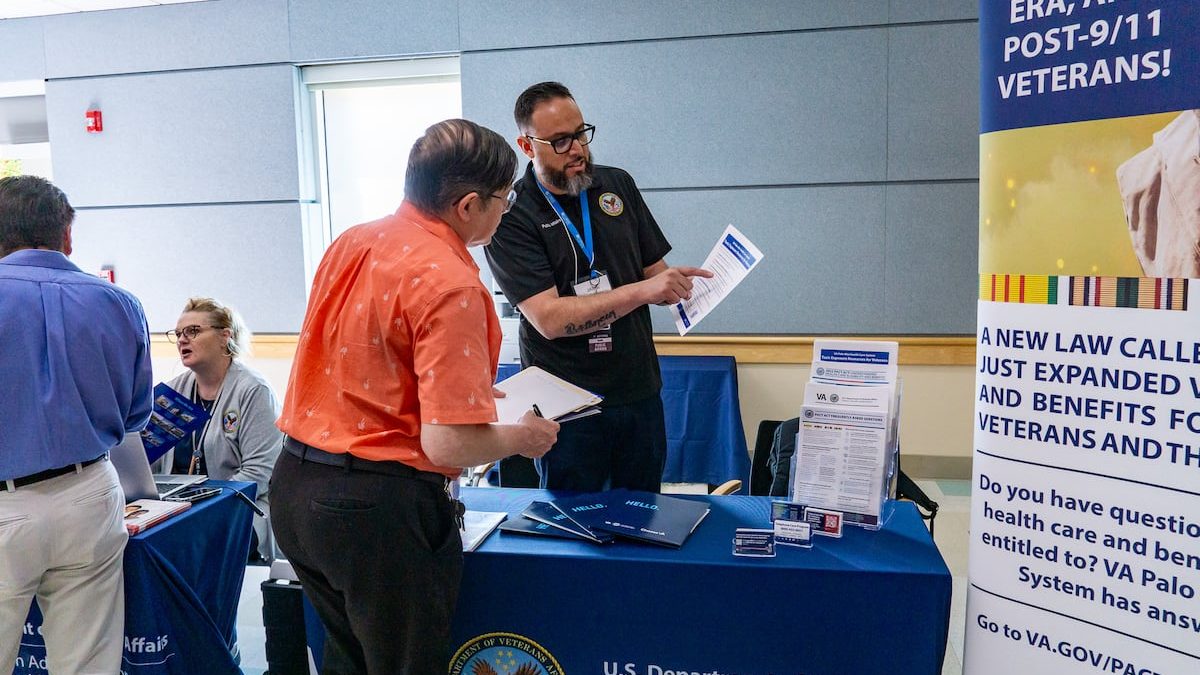Even for non-veterans, it has been hard to ignore the Department of Veterans Affairs over the last few years.
There have been sponsorships for college football bowl games promoting VA services, partnerships with companies like CVS and USAA, and ads sprinkled throughout online music channels and video streaming sites. The department held events at the Sturgis Motorcycle Rally in South Dakota and at Yankee Stadium last summer, just two of more than 500 high-profile outreach events that spanned all 50 states.
And that list doesn’t include a blitz of more than 50 million emails and 5 million texts sent directly to veterans asking how the department can help.
“Many veterans and many veteran families don’t know all of the different aspects of what VA can do for them, and we can’t expect them to know that,” said Adam Farina, assistant secretary for public and intergovernmental affairs at the department. “So much of this is about making the case why veterans should use VA; here’s how VA can make a difference in your life.”
Now the question is whether that sales pitch will continue.
RELATED
As a new administration takes over the White House, VA’s future outreach efforts remain a key question for the community. President-elect Donald Trump has not signaled whether the outreach focus under President Joe Biden will move ahead unchanged or if the department will key in on other priorities and promotions.
His pick to lead the department — former Georgia Rep. Doug Collins — is expected to be asked about his plans for outreach efforts during his confirmation hearing next Tuesday.
Current department leaders have said the idea of selling VA to the public, instead of waiting for veterans to discover benefits on their own, is an intentional shift in philosophy sparked by the 2022 passage of the PACT Act, which provided new medical care and disability compensation for one in five living veterans across the country.
It also included funding for outreach efforts, to make sure information about the new assistance wasn’t lost in bureaucratic filings.
Farina said that work began with events and campaigns focused on PACT benefits, but has grown into a larger VA-wide effort.
In November 2023, department leaders launched a $5 million “what you earned” campaign, talking about benefits including home loans, education stipends and memorial services. Although many of the services featured were not new, the aggressive outreach to the general public about them was.
He said while members of the public might assume veterans leave the military with a strong understanding of their veterans benefits, that often isn’t the case. There is no automatic enrollment into VA services as troops exit the armed forces. And members of Congress in recent years have been sharply critical of military transition programs, particularly the lack of information about veterans benefits.
“One thing we heard at many of these events was veterans telling us, ‘Wow, I didn’t know I was eligible for this,’” Farnia said. “We’ve had to tell them why it was a good idea for them to come to us. It’s not their job to figure out VA.”
Department leaders have been encouraged by the results of the outreach. Since August 2022, more than 4.8 million veterans have applied for benefits (up 42% over the previous 30 months) and more than 890,000 veterans have enrolled in VA health care (up 40% over the previous 30 months).
VA Secretary Denis McDonough has attributed the outreach campaign with helping to raise faith in department operations. Internal polling metrics have shown trust scores for VA care rise from 89% in fiscal 2020 to 92% last fiscal year, a figure he called positive, but still not high enough.
Farina would not speculate on the next administration’s priorities, but said the outreach work of the last few years is not an automatic occurrence. He described the work as a deliberate policy decision, and one that will need dedicated focus if it is to continue.
“This was a real priority for President Biden and Secretary McDonough, to bring as many veterans into VA as possible,” he said. “We know that veterans who come to VA are proven to do better and pay less for their health care. Their health outcomes are better. Their livelihoods are better.
“So, we wanted to do everything in our power to get veterans into VA. It’s our job to make sure that those veterans actually come in for that care and for those benefits.”
Leo covers Congress, Veterans Affairs and the White House for Military Times. He has covered Washington, D.C. since 2004, focusing on military personnel and veterans policies. His work has earned numerous honors, including a 2009 Polk award, a 2010 National Headliner Award, the IAVA Leadership in Journalism award and the VFW News Media award.
Read the full article here


